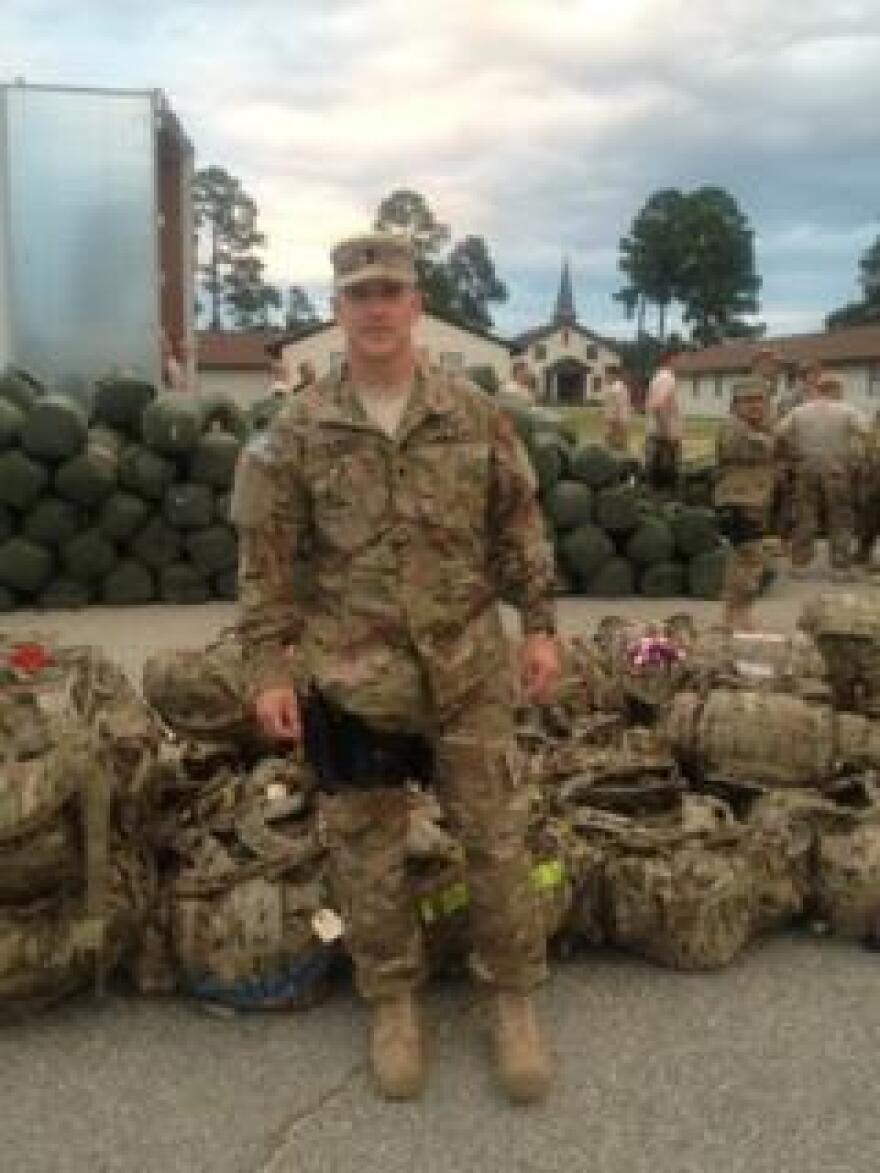This story is the first in KERA's series on veterans, part of the public media initiative "Veterans Coming Home."
One of the first things Dr. Stephen Burgher had to get used to as an emergency physician in Afghanistan was treating blast injuries.
Burgher, who is now an emergency trauma physician at Baylor University Medical Center at Dallas, spent seven months “in theater," serving as trauma team leader of a NATO combat hospital in Kandahar. There, his team handled the most severe trauma injuries.
“Many of the patients shot in the head would be transferred to us," he says. "We saw a lot of gunshot wounds to the head, and I was amazed at the survival rate."
His medical team had a 98 percent survival rate.
"If you came to us alive, you’d leave alive,” Burgher says.

Burgher’s trauma unit treated not only soldiers, but civilians of all ages.
A doctor's wartime journal
While in Kandahar, Burgher kept a journal he shared with family and friends. The entries capture challenging moments, and highlight differences between his life in Dallas and his life in war.
Journal entry: The salute seen around the world
One of the worst mass casualties of his tour took place just after midnight on Oct. 6, 2013:
We got back to our barracks and had just drifted off to sleep when all hands received a Mascal call out at 0030. Casualties were en route from a dismounted IED attack, followed by secondary IED(s) and suicide IEDs. All U.S. guys, 12 injured, most requiring OR, with a variety of injuries.
Among the worst casualties was Army Ranger Josh Hargis, who lost both legs and nearly bled to death from his injuries.
“But he came to us alive," Burgher says. "So we went into gear, got blood going, put him on a ventilator."
Before sending Hargis off for more surgeries, he was put in the ICU, and thought to be unconscious.
At a bedside ceremony, his commanding officer wanted to give him his Purple Heart. Though gravely wounded, the soldier’s hand rose in a salute.
The moment stuck in Dr. Burgher’s mind, and was captured by a photographer. Within hours, the picture went viral. It became “the salute seen around the world.”
“It was one of the soldiers we had the privilege of treating here at KAF,” recalls Stephen, who was in the room at the time. “Through it all, he raises his hand to his brow and salutes. A hero and a patriot.”

Journal entry: The resilience of children
Burgher wrote about one severely injured child:
On my last shift 2 days ago, we had a 1-year-old Afghan child brought in after IED killed both his parents and severely injured him. He was the only survivor from the blast. He sustained a left leg above knee amputation (AKA), facial burns, skull fracture with intracranial hemorrhage and collapsed lung (pneumothorax). Today critical but stable and improving. Should come off ventilator today or tomorrow.
In later journal entries, he offered an update on the child’s status:
Our 1-year-old child hit by the IED is doing amazingly well (day 17). Smiling, playing, laughing, eating...his only deficit is his left leg amputation. The Red Cross will be fitting him for a prosthesis this week. Pray for his circumstances once he's discharged, which should be soon…. An update on Wakil, our 1-year-old amputee survivor from an IED. The Red Cross found his grandfather about a week after Wakil arrived to us. Amazing that they could track him down as he lives one province over and has no phone. For the first week he thought his grandson was dead. Once he was contacted and arrangements made for him to visit (not an easy feat), he found Wakil intubated, sedated and not full of life. He had tubes coming out his chest, mouth and elsewhere, had an amputated leg and a head wound. During that initial and only visit while Wakil was in the hospital, it was apparent that the grandfather was overwhelmed and not enthusiastic about taking care of this "burden". We weren't sure we'd see him again. However, when Wakil was ready to be discharged home on Sunday from the hospital, the Red Cross was able to reunite the two again. This time Wakil was fully recovered from his injuries (minus the amputated leg, which the Red Cross has made arrangements for ongoing prosthetic care). He was laughing, smiling, playful and an essentially a normal child. And the grandfather was overwhelmed with joy and gratitude and tears. He could hardly contain himself. He was so excited to have this little child back (keep in mind he just lost Wakil's parents, his son or daughter). This is how the hearts and minds of the people are won over. One starfish at a time. Please keep Wakil and his grandfather in your prayers.






